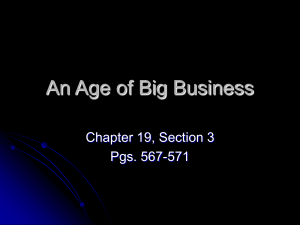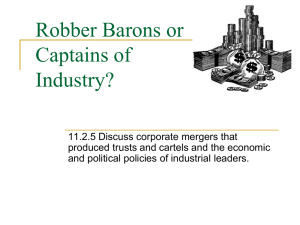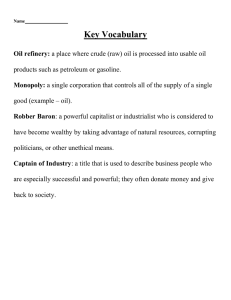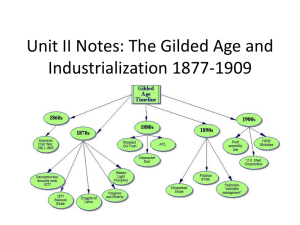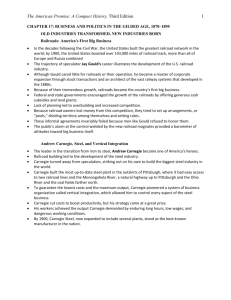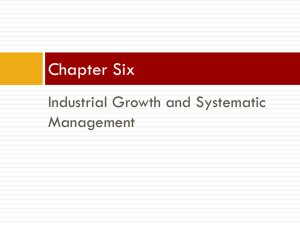File
advertisement
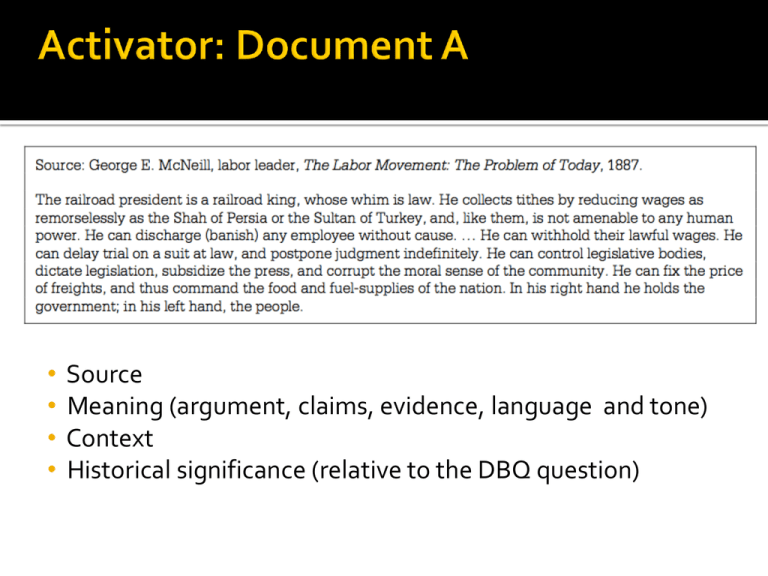
• • • • Source Meaning (argument, claims, evidence, language and tone) Context Historical significance (relative to the DBQ question) Technological and Industrial Revolution, Rise of Big Business In the post–Civil War United States, corporations grew significantly in number, size, and influence. Analyze the impact of big business on the economy and politics and the responses of Americans to these changes. Confine your answer to the period 1870 to 1900. Union Pacific RR -> built west from Omaha, NE Given 20 square miles of land for each mile of track laid Given generous loans from government “Irish Paddies” Central Pacific RR -> Sacramento to Sierra Nevada Given same subsidies as Union Pacific Used predominantly Chinese labor Great Northern: Connected Minnesota to Seattle Cornelius Vanderbilt: Made millions in RR industry, popularized the steel rail Two improvements in RR: Steel rail safer, stronger, last longer Standard gauge of track interchangeable parts, popularized by Eli Whitney Other advancements: Westinghouse air brake Pullman Palace Cars RR’s “created an enormous domestic market for American raw materials and manufactured goods” Other impacts of RR: Stimulated immigration Establishment of time zones “Stock watering”: Railroad stock promoters grossly inflated value of stock. Stock = share of a company, offered by a company as a way of earning capital and purchased by investors RR tycoons became very powerful Bribed judges and legislatures, employed lobbyists, etc. “Pools” An agreement to divide the business in a given area and share the profits (form of combination) Charged more for short hauls than long ones • • • • Source Meaning (argument, claims, evidence, language and tone) Context Historical significance (relative to the DBQ question) Businesses merge to “corner” a market, eliminate competition and inflate prices Corporations are entities that are legally independent from their owners Can sue, be sued, own and sell property, etc. Run by powerful capitalists (Carnegie, Rockefeller, Gould, Vanderbilt, etc.) Trusts, similar to ”pools,” are businesses that combine and do business only with one another Monopoly = when a business has complete control over an industry (e.g. Rockefeller controlled 90% of oil refineries in the U.S.) Millionaires (entrepreneurs/capitalists) look for areas to invest their capital Patents were issued at high rates Key inventions: Phone (Alexander G. Bell) women work the “switchboard” Electric light, phonograph, mimeograph, Dictaphone, moving pictures. Andrew Carnegie (steel) introduces vertical integration: Controlling every aspect of production from beginning to end improve efficiency by making supplies more reliable, controlling quality of the product at all stages of production, and eliminate middlemen’s fees Horizontal integration: (Rockefeller, oil) Owning most or all businesses in an industry Illegal • • • • Source Meaning (argument, claims, evidence, language and tone) Context Historical significance (relative to the DBQ question) “Survival of the fittest” Darwin's ideas about species were later applied to businesses and humans Reverend Russell Conwell of Philadelphia, “Acres of Diamonds”: “There is not a poor person in the United States who was not made poor by his own short- comings.” Carnegie believed the wealthy, as caretakers, should be morally responsible Philanthropy—the belief in giving back to society in the form of charity Carnegie: “A man who dies rich dies in disgrace.” Were the entrepreneurs of the industrial age captains of industry or robber barons?
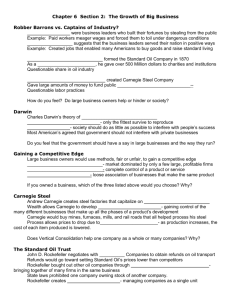
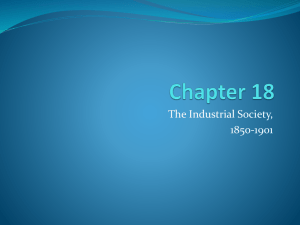
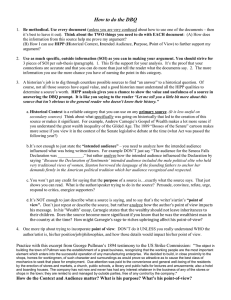

![men_who_built_america[1]](http://s2.studylib.net/store/data/005219845_1-7979604da89ac700f7913bb56611cc41-300x300.png)
